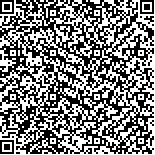本文已被:浏览 691次 下载 1276次
Received:September 27, 2022 Published Online:May 20, 2023
Received:September 27, 2022 Published Online:May 20, 2023
中文摘要: 目的 研究2型糖尿病(T2DM)患者葡萄糖在目标范围内时间(TIR)与血清肿瘤标志物的相关性。方法 回顾性选取2021年3月至2022年3月就诊于郑州大学第二附属医院的T2DM患者共300例为研究对象,根据14d的动态血糖监测分为未合格组(TIR≤70%)159例和合格组(TIR>70%)141例,未合格组内分为控制差组(TIR≤40%)和未达标组(TIR>40%~70%),合格组内分为达标组(TIR>70%~<85%)和优秀组(TIR≥85%),共四个亚组。收集患者性别、年龄、病程、TIR及葡萄糖超过目标范围内时间(TAR)、葡萄糖低于目标范围时间(TBR)所占百分比、空腹血糖(FPG)、空腹C肽、糖化血红蛋白(HbA1c)、癌胚抗原(CEA)、糖原类抗原(CA)199、CA724、CA125、甲胎蛋白(AFP)、细胞白蛋白19片段(CYF211),男性患者收集总前列腺特异性抗原(TPSA)及游离前列腺特异性抗原(FPSA)。结果 未合格组的病程、HbA1c、CEA、CYF211、TPSA显著高于合格组,C肽低于合格组(P<0.05)。而四亚组间,控制差组及未达标组病程显著长于其余组(P<0.05);HbA1c、FPG在控制差组显著高于其余组,且未达标组的HbA1c高于优秀组(P<0.05)。控制差组的AFP高于其余组(P<0.05);控制差组CEA高于未达标组及达标组(P<0.05);控制差组CYF211高于达标组及优秀组,且未达标组高于达标组(P<0.05)。相关性分析显示,TIR与CEA(r=-0.14, P<0.05)及CYF211(r=-0.17, P<0.05)呈负相关;TAR与CEA(r=0.19, P<0.01)、CYF211(r=0.17, P<0.05)及AFP(r=0.13, P<0.05)呈正相关。结论 T2DM患者提高TIR、降低TAR百分比可减少肿瘤标志物水平升高的风险,而TBR对肿瘤标志物无明显影响。
Abstract:Objective To investigate the relationship between glucose time in range(TIR) and serum tumor markers in patients with type 2 diabetes mellitus(T2DM). Methods The data of 300 T2DM patients treated in the Second Affiliated Hospital of Zhengzhou University from March 2021 to March 2022 were selected. According to the 14 days of continuous glucose monitoring, the patients were divided into unqualified group(TIR≤70%, n=159) and qualified group(TIR>70%, n=141). The unqualified group was divided into poor-control subgroup(TIR≤40%) and non-standard subgroup(TIR>40%-70%). The qualified group was divided into standard subgroup(TIR>70%-<85%) and excellent group(TIR≥85%). The clinical data of patients, including gender, age, course of disease, percentages of glucose TIR, time above range(TAR)and time below range(TBR), fasting plasma glucose(FPG),fasting C-peptide, glycated hemoglobin A1c(HbA1c), carcinoembryonic antigen (CEA), carbohydrate antigen (CA)199, CA724, CA125, alpha-fetoprotein(AFP), cytokeratin 19 fragment(CYF211) and total prostate-specific antigens(tPSA) and free prostate-specific antigens(fPSA) of male patients were collected. Results The course of disease, HbA1c, CEA, CYF211 and TPSA levels in unqualified group were significantly higher than those in qualified group, while C-peptide level was lower than that in qualified group(P<0.05). Among the four subgroups, the courses of disease in poor-control subgroup and non-standard subgroup were significantly longer than those in standard subgroup and excellent subgroup(P<0.05). HbA1c and FPG levels in poor-control subgroup were significantly higher than those in the other subgroups, and HbA1c in non-standard subgroup was statistically higher than that in excellent subgroup(P<0.05). AFP in poor-control subgroup was significantly higher than that in the other subgroups(P<0.05), and CEA in poor-control subgroup was higher than that in non-standard subgroup and standard subgroup(P<0.05). CYF211 in poor-control group was higher than that in standard and excellent groups and it was also higher in non-standard group compared than that in standard group(P<0.05). Correlation analysis showed that TIR was negatively correlated with CEA (r=-0.14, P<0.05) and CYF211 (r=-0.17, P<0.05), and there were positive correlations between TAR and CEA (r=0.19, P<0.01), CYF211 (r=0.17, P<0.05) and AFP (r=0.13, P<0.05). ConclusionIn T2DM patients, increasing the percentage of TIR and reducing the percentage of TAR can reduce the risk of elevated tumor markers, while TBR has no significant impact on tumor markers.
keywords: Type 2 diabetes mellitus Time in range Glucose fluctuation Tumor marker Continuous glucose monitoring Carcinoembryonic antigens
文章编号: 中图分类号:R587.1 文献标志码:A
基金项目:河南省科技攻关计划项目(17210231032)
引用文本:
